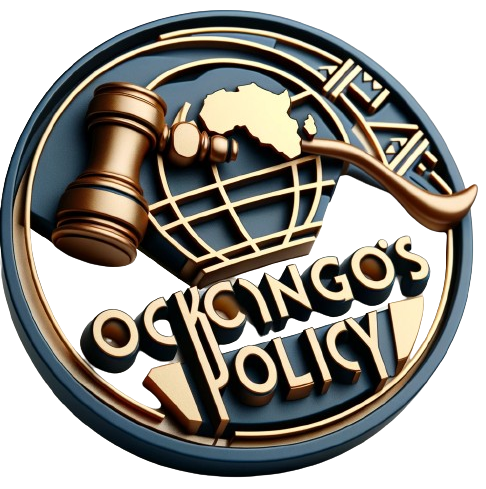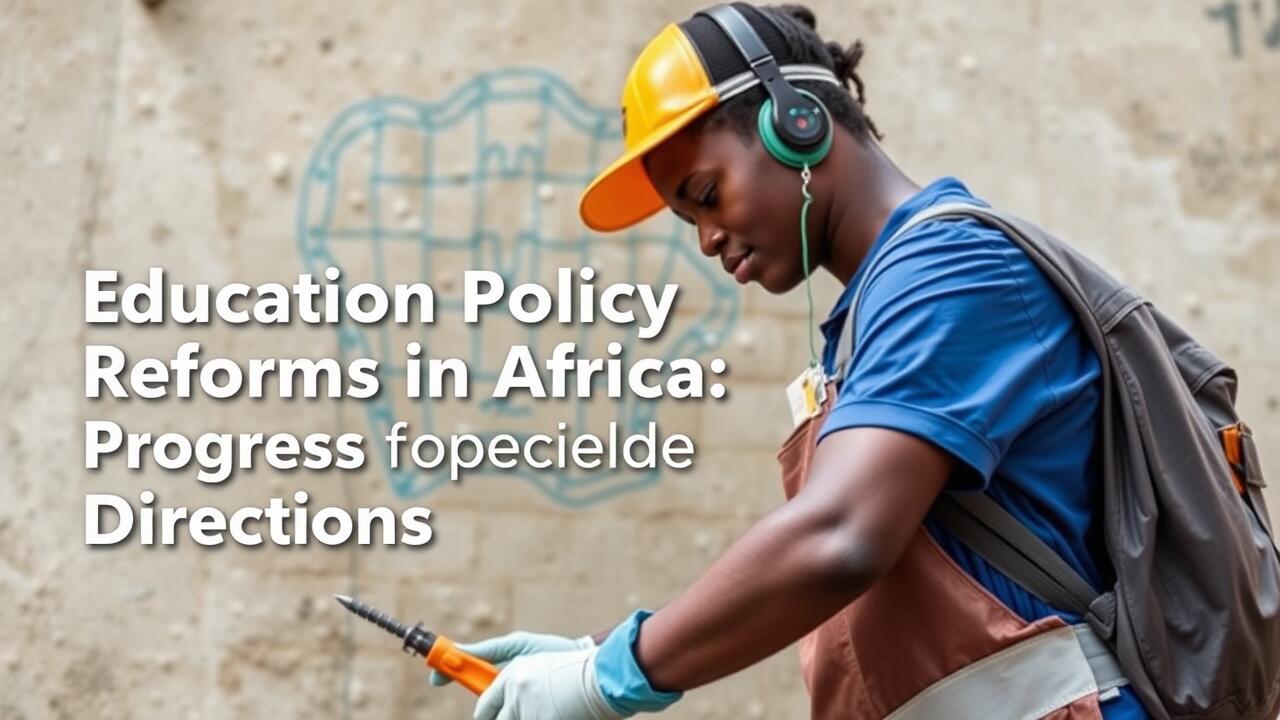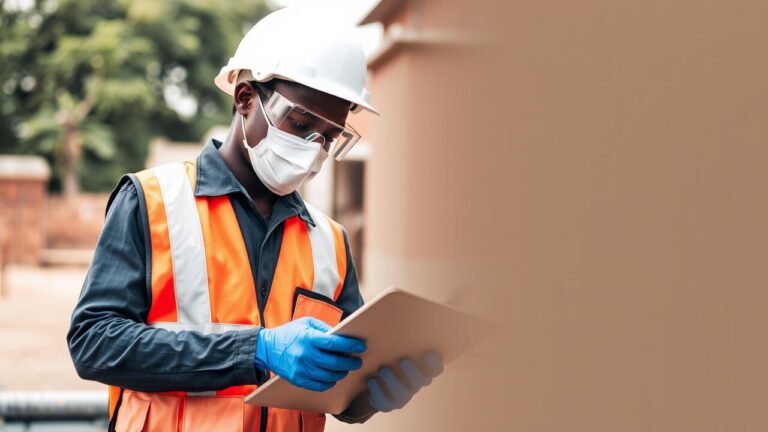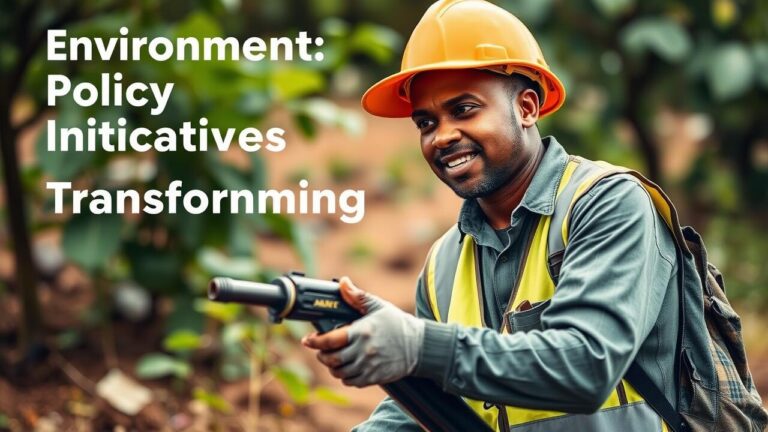Education Policy Reforms in Africa: Progress and Future Directions
In the vibrant tapestry of Africa’s educational landscape, an exciting evolution is taking root—one that boldly champions innovative models focused on the learner at its core. It’s a dynamic shift where project-based learning, hands-on experiences, and collaborative initiatives reign supreme, urging students to dive headfirst into engagement with their peers and communities alike. These forward-thinking strategies don’t just scratch the surface; they dig deep into fostering critical thinking and honing problem-solving abilities—skills indispensable for navigating our swiftly transforming world.
Gone are the days when rote memorization held sway over classrooms! Educators are now liberating minds from those confines, paving pathways for creativity to flourish alongside self-directed learning. The classroom becomes a canvas where ideas can dance freely!
Moreover, interdisciplinary learning is making waves across numerous African institutions—a compelling approach that weaves together diverse subjects like threads in a rich fabric. Picture this: blending science with art not only amplifies comprehension but also sparks creativity within problem-solving scenarios. Such inventive tactics elevate student engagement to new heights, rendering education not just relevant but exhilarating—equipping young minds for the intricate demands of today’s ever-evolving workforce in this 21st century landscape!
Technology Integration in Education
The infusion of technology into Africa’s educational systems has emerged as an essential catalyst, turbocharging the dynamics of teaching and learning. Picture this: digital tools—everything from cutting-edge interactive software to a treasure trove of online resources—are becoming more accessible by the day. This accessibility opens the floodgates for educators to unleash innovative methodologies that embrace a kaleidoscope of learning styles. With these tech advancements in hand, teachers can craft vibrant, personalized learning experiences that ignite critical thinking and spark collaboration among students.
But wait, there’s more! Technology isn’t just about engagement; it’s also a game-changer in leveling the playing field for those in remote or underserved regions. Think e-learning platforms and mobile apps bursting with flexible access to top-notch educational materials—transforming obstacles posed by geography into mere stepping stones on the path to knowledge. As infrastructure continues its upward trajectory across the continent, we stand on the brink of an exciting future where these digital solutions empower both learners and educators alike. The promise? A richer, more inclusive tapestry woven into our educational landscape!
Future Directions for Education Policies
The landscape of education policies in Africa is poised for a transformation, one that seeks to embrace the ever-shifting tides of socio-economic realities. Policymakers are awakening to the pressing need for frameworks that not only bend but also flexibly mold themselves around local peculiarities and global hurdles alike. Central to this evolution is an urgent emphasis on funneling resources into teacher training and revamping curricula—essential cogs in the wheel of educational progress.
Moreover, the notion of continuous professional development for educators isn’t just a box to tick; it’s a dynamic pathway toward enriching teaching practices with innovative methodologies that can breathe new life into classrooms. The ripple effect? A noticeable enhancement in educational quality across diverse landscapes.
But wait! There’s more brewing beneath the surface: data analytics is set to weave itself deeper into decision-making fabric like never before. By leveraging technology, education systems will unlock powerful insights into student performance and institutional efficacy—a treasure trove of information ripe for targeted interventions and strategic resource allocation.
Looking ahead, future policies are likely to champion collaboration—not merely as an afterthought but as a cornerstone—uniting governments, private sector players, and civil society organizations in pursuit of sustainable education practices that resonate far beyond immediate needs. The journey has just begun!
Emerging Trends and Predictions
The educational tapestry of Africa is undergoing a breathtaking transformation, with a multitude of trends intricately weaving the fabric of its future. Blended learning models—those fascinating hybrids that marry traditional classroom settings with the vast expanse of online education—are gaining momentum like wildfire. This innovative approach not only dances gracefully between flexibility and structure but also flings open the doors to quality resources that were once out of reach for many. As internet connectivity seeps deeper into communities, educators are increasingly embracing digital tools, igniting a spark of engagement and interactivity among students in ways previously unimaginable.
Peering into the horizon, one can almost feel the palpable excitement surrounding artificial intelligence’s impending role in personalized learning environments—it’s poised to flip our understanding of educational content delivery on its head! Imagine adaptive technologies fine-tuning lessons to meet each student’s unique needs; it’s a brave new world where education becomes more effective and inclusively tailored than ever before. Moreover, there’s an awakening acknowledgment regarding mental health and emotional well-being within educational policies—a crucial step forward! Schools are expected to roll out comprehensive programs that address these dimensions, cultivating spaces ripe for holistic student development.
These emerging currents hint at a significant pivot towards more responsive and inclusive practices across this vibrant continent—an evolution that’s as thrilling as it is necessary.
The Importance of Inclusive Education
Inclusive education stands as a vital pillar in the quest for fair learning landscapes, where every student—no matter their background or abilities—can tap into quality educational experiences. This paradigm embraces the rich tapestry of learner diversity, cultivating an atmosphere where differences are not just acknowledged but celebrated. By catering to a spectrum of learning styles, disabilities, and cultural narratives, inclusive education boosts engagement and nurtures that all-important sense of belonging among students. It doesn’t stop there; it also lays the groundwork for developing critical social skills, empathy, and understanding in generations yet to come.
To weave this fabric of inclusivity effectively requires deliberate strategies tailored to tackle the unique hurdles faced by marginalized communities. It’s crucial that educators receive robust training that arms them with the tools necessary to foster adaptable and supportive learning environments. Moreover, policy frameworks must shine a spotlight on resource allocation so schools can craft inclusive curricula and build accessible facilities. The heartbeat of this initiative lies in community involvement—ensuring schools resonate with the distinct needs pulsating through their local populations. Emphasizing inclusive education is not merely a goal for African nations; it’s a pathway toward crafting more harmonious societies while simultaneously elevating educational outcomes across the board.
Strategies for Addressing Marginalization
Ensuring that marginalized communities gain access to quality education is no simple feat; it demands a labyrinth of tailored strategies, each one finely tuned to tackle the myriad barriers these groups face. Governments find themselves tasked with peeling back the layers of unique challenges—socio-economic obstacles and geographic isolation loom large like dense fog. By rolling out targeted funding initiatives, they can breathe life into under-resourced areas that have long been neglected.
But that’s just part of the puzzle! Community-based programs, infused with local voices and stakeholders, can amplify awareness and rally support for those often left in the shadows. Here’s where educators step onto the stage: they bear an immense responsibility in sculpting inclusive classrooms that embrace an array of learning needs. Professional development initiatives centered around inclusive teaching practices become essential tools in their arsenal, empowering them to reach students hailing from diverse backgrounds.
Moreover, collaboration with organizations fiercely dedicated to equity in education offers treasure troves of resources and training opportunities. And let’s not overlook parental engagement—it acts as a powerful catalyst! Workshops and informational sessions don’t just inform families; they embolden them to champion their children’s educational journeys passionately. In this intricate tapestry of efforts lies hope—a pathway toward equitable education for all.
Stakeholder Engagement in Education Reforms
The success of education reforms hinges critically on the active involvement of a myriad of stakeholders. This participation isn’t just a checkbox to tick off; it must span an eclectic mix of individuals and groups—think educators, parents, community advocates, and local governments all chipping in. When these diverse voices come together, they create a vibrant tapestry where unique perspectives intertwine to shape policy formation and implementation in ways that resonate more deeply with actual needs.
Moreover, initiatives driven by the community can dramatically amplify the relevance and impact of educational policies. Picture this: when educators are drawn into decision-making processes from the get-go, reforms morph to meet the real-life demands faced by both teachers and students. It’s about forging channels for ongoing dialogue—a mechanism that not only empowers stakeholders but also cultivates a profound sense of ownership and accountability toward educational outcomes. In essence, weaving together a robust engagement strategy aligns various interests like puzzle pieces fitting snugly into place, significantly boosting the chances for successful reforms capable of adapting to our ever-evolving educational landscape.
Involving Communities and Educators
Engaging local communities and educators? Absolutely essential for the triumph of educational reforms! When stakeholders dive headfirst into the decision-making mix, their perspectives spark a kaleidoscope of insights that lead to strategies bursting with relevance and cultural resonance. Picture this: collaboration between schools and community members creating a vibrant tapestry of support—a nurturing environment where educational policies aren’t just top-down mandates but dynamic reflections of the populace’s needs and dreams.
And let’s not forget our educators—these frontline warriors armed with firsthand knowledge about classroom challenges—they’re absolutely crucial in sculpting these reforms! Professional development opportunities? Yes, please! Providing platforms for teachers to swap stories enhances their ability to contribute in meaningful ways. Imagine channels buzzing with regular dialogue among policymakers, educators, and community advocates—this is where continuous feedback thrives, allowing for nimble adjustments on the fly. Such inclusive practices don’t merely scratch the surface; they illuminate gaps within the educational framework while crafting strategies that champion equity and elevate quality learning outcomes across the board.
| Stakeholder Group | Role in Educational Reform | Key Contributions |
|---|---|---|
| Community Members | Provide local insights and needs | Input on cultural relevance and program design |
| Educators | Frontline informants of classroom realities | Identifying areas for professional development and reform |
| Policymakers | Design and implement educational policies | Facilitate dialogue and feedback loops |
| Students | End-users of educational strategies | Feedback on learning experiences and outcomes |
Evaluating the Impact of Reforms
Measuring the impact of educational reforms across Africa is no simple endeavor; it’s a labyrinthine task that intertwines both quantitative and qualitative metrics in an intricate dance. Key performance indicators—those numerical signposts we often cling to—typically showcase enrollment rates, graduation figures, and standardized test scores like trophies on a shelf. Yet, lurking beneath the surface are qualitative assessments derived from surveys and interviews with students, teachers, and parents—a treasure trove of perspectives that illuminate the true effectiveness of reform initiatives. This mixed-methods approach allows policymakers to weave together a richer tapestry revealing how these reforms reshape learning environments and outcomes for an array of student populations.
To truly capture the long-term effects of policy changes, establishing robust evaluation frameworks becomes not just important but essential. These frameworks must be dynamic entities themselves—incorporating regular monitoring and assessment mechanisms that can pivot based on emerging data as if they were dancers responding to an unseen rhythm. Longitudinal studies have their own magic; they unveil trends over time while case studies offer vibrant snapshots of reform impacts within specific regions—a kaleidoscope view into the complexities at play. By embracing this systematic approach to evaluation, stakeholders unlock deeper insights into both the triumphs and tribulations tied to educational policies. In doing so, they ensure that reforms evolve continuously in ways that genuinely resonate with all learners’ needs.
Metrics for Measuring Educational Outcomes
To truly grasp the intricacies of educational outcomes, one must embrace a comprehensive framework that unravels the effectiveness of reforms with clarity and depth. Picture this: quantitative indicators—those concrete metrics like standardized test scores, graduation rates, and enrollment figures—serve as sturdy cornerstones in this vast edifice of evaluation. They allow policymakers to take a pulse on progress, but they tell only part of the story. Enter qualitative assessments! These rich narratives woven from student feedback and classroom observations dive deeper into the essence of learning environments and student engagement itself. When these methodologies intertwine, they create a vibrant tapestry that paints a holistic picture of education’s landscape, illuminating both strengths and weaknesses alike.
Yet wait—there’s more! Effective evaluation does not merely skim the surface; it demands an unwavering focus on equity within these educational outcomes. By dissecting data through lenses such as gender, socioeconomic status, and regional disparities, we uncover critical gaps hiding in plain sight among diverse student populations. This layered approach doesn’t just point out where improvements are needed; it sparks targeted interventions designed to uplift marginalized groups who often find themselves at a disadvantage. In prioritizing inclusive metrics—those that honor every voice—we can refine education policies to ensure they resonate with the diverse symphony of needs presented by all learners across myriad contexts.
- Develop a balanced set of both quantitative and qualitative metrics to capture the full scope of educational outcomes.
- Utilize disaggregated data to analyze performance across different demographics and address disparities.
- Integrate stakeholder feedback, including insights from students, parents, and educators, to enhance the evaluation process.
- Implement formative assessments that provide ongoing feedback rather than solely relying on summative measures.
- Set specific, measurable goals related to equity in educational outcomes to track progress over time.
- Leverage technology and data analytics to facilitate real-time monitoring and reporting of educational metrics.
- Foster a culture of continuous improvement by regularly revisiting and refining evaluation criteria based on new insights and trends.
Conclusion
The educational landscape in Africa is in the throes of a remarkable metamorphosis, fueled by groundbreaking techniques and leaps in technology. Policymakers and educators are awakening to the undeniable power of modern tools—tools that can elevate learning experiences to new heights. And then there’s this burgeoning focus on inclusive education, where concerted efforts are being made to ensure that no marginalized community lags behind in the rush toward progress.
Tackling these multifaceted challenges calls for an intricate tapestry of collaboration among stakeholders at every level: governments, teachers, local communities—all must weave their strengths together. It’s crucial to engage in ongoing evaluations of educational reforms; after all, measuring impact is vital for tailoring strategies that resonate with the ever-shifting needs of students and society alike. As Africa strides boldly into its future, a steadfast commitment to educational equity will be instrumental in crafting a luminous path forward for generations yet unborn.







